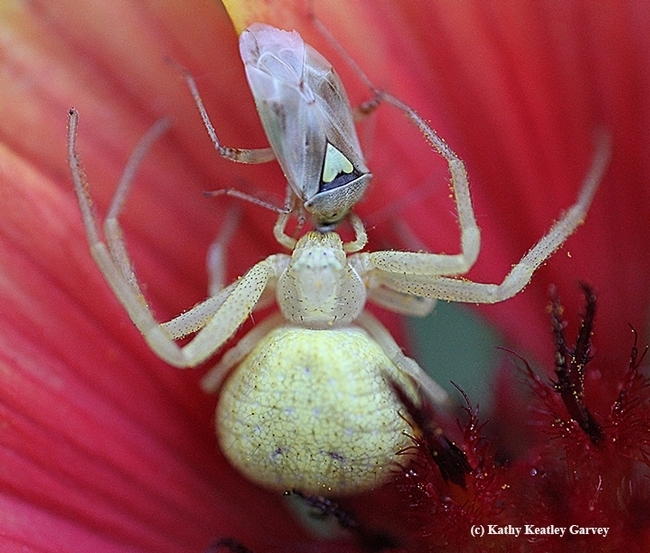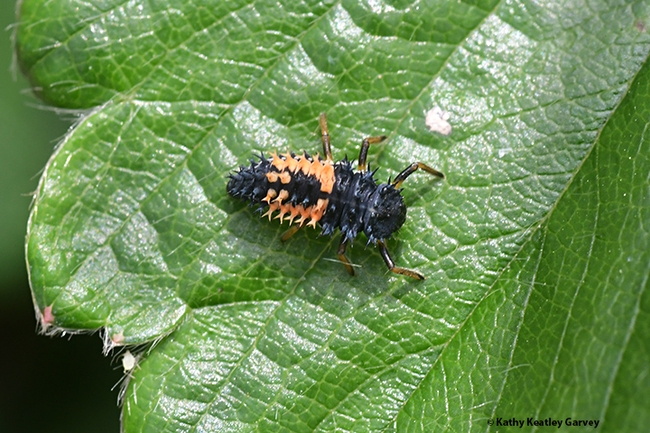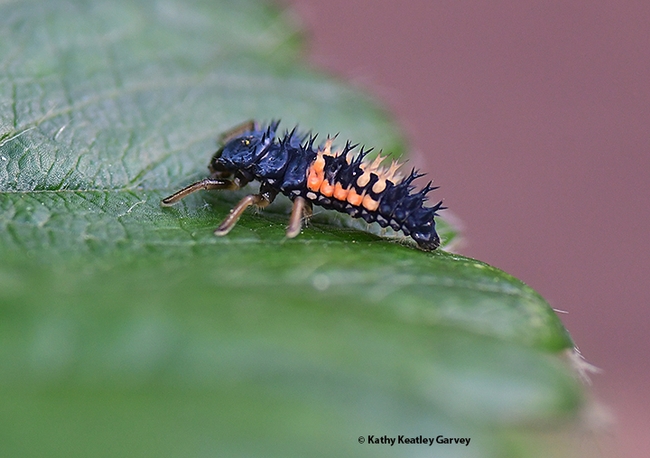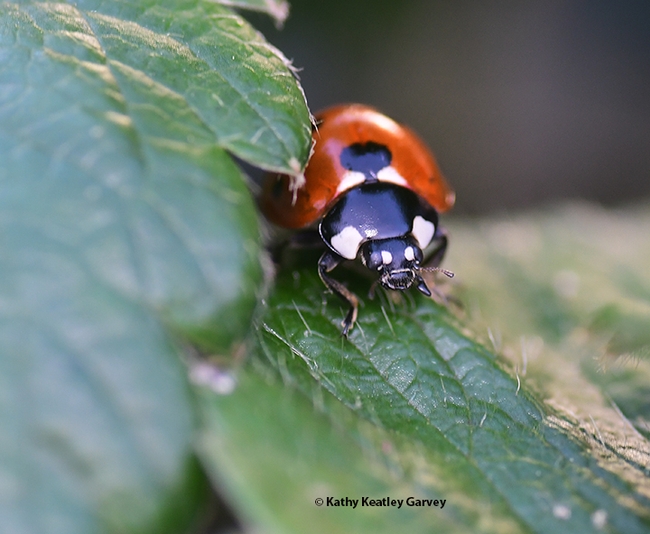- Author: Kathy Keatley Garvey
It's Arachtober and that means celebrating arachnids for the entire month of October.
Well, we ought to celebrate them year around, but October is THEIR month.
Let's especially applaud crab spiders when they prey on such agricultural pests as the lygus bug, also known as the "western tarnished plant bug." It's a member of the genus Lygus in the family Miridae and feeds on plants by piercing the plant tissues.
The lygus bug is easily distinguished by the triangular mark on its back.
The western tarnished plant bug (Lygus hesperus) is known as a very serious pest of cotton, strawberries and seed crops such as alfalfa, entomologists tell us. In California alone, the bug causes $30 million in damage to cotton plants each year, "and at least $40 million in losses to the state's strawberry industry," according to Wikipedia.
"Lygus bugs are one of the causes of irregularly shaped, cat-faced strawberries; another cause may be poor pollination, which results in small undeveloped seeds," says UC Statewide Integrated Pest Management Program (UC IPM) in its Pest Management Guidelines. "Lygus bugs damage fruit by puncturing individual seeds; this, in turn, stops development of the berry in the area surrounding the feeding site. Straw-colored seeds that are large and hollow are a good indication of lygus bug damage. Lygus bug damage is more of a problem in strawberry-growing areas where continuous fruit production occurs.
"Adults are about 0.25 inch (6 mm) long, oval, and rather flattened," UC IPM points out. "They are greenish or brownish and have reddish-brown markings on their wings."
So what happens when a crab spider nails a lygus bug?
The cheering section is loud.

- Author: Kathy Keatley Garvey
They're not exactly cute, cuddly little critters.
Some folks say they look like miniature alligators or "ugly, spiky orange-and-black buggy thingies."
Many a novice gardener has glanced at them, smashed them, and yelled "Gotcha! Now stay outta my garden, y'hear?
What they killed were the larvae of lady beetles, aka ladybugs (family Coccinellidae). They're beneficial insects, the good guys (and gals). Both the adults and the larvae of lady beetles feast on aphids and other soft-bodied insects such as scales and mites.
They are not your enemy.
And if there are kids in your family, show them this time-lapse video of the Ladybug Life Cycle by TSST. That would be "The Kid Should See This."
"One ladybug can eat up to 5,000 insects in its lifetime!" says TSST. "Most ladybugs have oval, dome-shaped bodies with six short legs. Depending on the species, they can have spots, stripes, or no markings at all."
Spoiler alert: You can't say that "no animals were harmed in the making of this video." Yes, there's some cannibalism. It's not good to be the last egg hatched.



- Author: Kathy Keatley Garvey
First the buds, then the blossoms, then the bees.
The Häagen-Dazs Honey Bee Haven, a half-acre, bee-friendly garden planted in the fall of 2009 next to the Harry H. Laidlaw Jr. Honey Bee Research Facility on Bee Biology Road, UC Davis, is, in one word—spectacular.
The strawberries planted in the haven are in various stages of growth: buds, blossoms, immature fruit and now ripe fruit.
The bees did it.
It's a good time to view the garden, which is open from dawn to dusk every day. There's no admission charge.
You'll see art work; assorted fruits, vegetables and herbs; ornamental plants; and insects! The garden provides the Laidlaw honey bees with a year-around food source, raises public awareness about the plight of honey bees, encourages visitors to plant bee-friendly gardens of their own, and serves as a research site.




